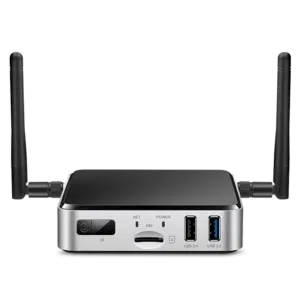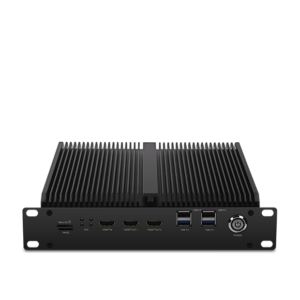Unlocking the Power of AI on Edge Devices
Unlocking the Power of AI on Edge Devices
Blog Article
Real-World Applications of AI on Side Devices
Real-World Purposes of AI on Side Units
Synthetic intelligence (AI) is no more limited to the sphere of big, centralized data centers. As a result of developments in technology, side units now play a vital position in deploying AI straight where information is generated. But what does AI on side devices mean, and how come it creating this kind of excitement? Here, we'll investigate how edge ai device operates in the real world through side devices and reveal its wide variety of useful applications.

What's AI on Side Products?
AI on edge units identifies deploying artificial intelligence methods on units like smartphones, cameras, drones, or IoT sensors. These units do not require use of centralized servers for processing data; alternatively, they perform evaluation and conclusions locally, making the method faster, better, and frequently more secure.
The "edge" here only refers to research done near to or at the source of knowledge technology, rather than counting on the cloud. This shift is pushed by the needs for real-time information processing and the necessity to minimize latency, improve solitude, and minimize bandwidth usage.
Critical Real-World Applications of Side AI
1. Clever Surveillance
AI-powered cameras built with facial acceptance, activity recognition, and anomaly recognition are transforming security systems. Edge products in that domain may analyze movie streams in real-time to identify suspicious actions, eliminate fake alarms, and improve community safety. For instance, AI algorithms can detect strange activities and alert authorities instantly without the necessity to send movie information to a central host for analysis.
2. Healthcare Checking
Wearable devices and lightweight medical gear are leveraging ai m.2 module for controlling wellness knowledge more efficiently. Edge-based AI in devices like wellness trackers and smartwatches screens users' vitals, such as for example heartbeat, oxygen levels, or body force, in real-time. These systems analyze data domestically and give instant feedback, paving the way for quicker treatment throughout emergencies.
Beyond wearables, sophisticated medical imaging units designed with on-device AI may detect signs of disorders like cancer, enabling early in the day diagnoses even in remote places without internet connectivity.
3. Autonomous Cars
Self-driving cars are among the most well-known types of edge AI in action. With receptors, cameras, and LiDAR techniques serving as information sources, AI computations get position onboard these vehicles to produce split-second decisions. From finding pedestrians and obstacles to navigating town streets, edge AI assures that the automobile works reliably and efficiently. The real-time control capability of edge units reduces the dependence on high-latency cloud techniques, ensuring protection in life-critical scenarios.
4. Retail Analytics
Edge devices in retail conditions are helping corporations analyze client behavior. Intelligent shelves and AI-equipped cameras may detect client choices, check catalog, and actually customize in-store experiences in actual time. The information produced from they assists shops make educated decisions, increase customer satisfaction, and optimize stock management.

5. Commercial IoT
Factories and professional plants are adopting edge AI to revolutionize their tracking and automation processes. AI-powered detectors on machinery identify potential problems a long time before they lead to costly failures. Predictive maintenance pushed by side AI reduces downtime, increases production, and guarantees security on the manufacturing floor.
6. Customized Activities in Consumer Devices
Your smartphone is a leading exemplory instance of how edge AI personalizes person experiences. Characteristics such as voice assistants, flexible camera adjustments, and on-device language interpretation use real-time AI to react to individual needs without giving sensitive and painful data to outside servers. That fosters both comfort and solitude for the end user.
The Growing Impact of Side AI
The ownership of AI on side products remains to rise, driven by industries' increasing demand for low-latency, real-time computing, and better data privacy. Their purposes are reshaping industries which range from healthcare and automotive to public security and retail. By putting AI's power nearer to wherever knowledge is produced, edge products aren't just increasing performance but also showing the countless potential of development in the current connected world. Report this page